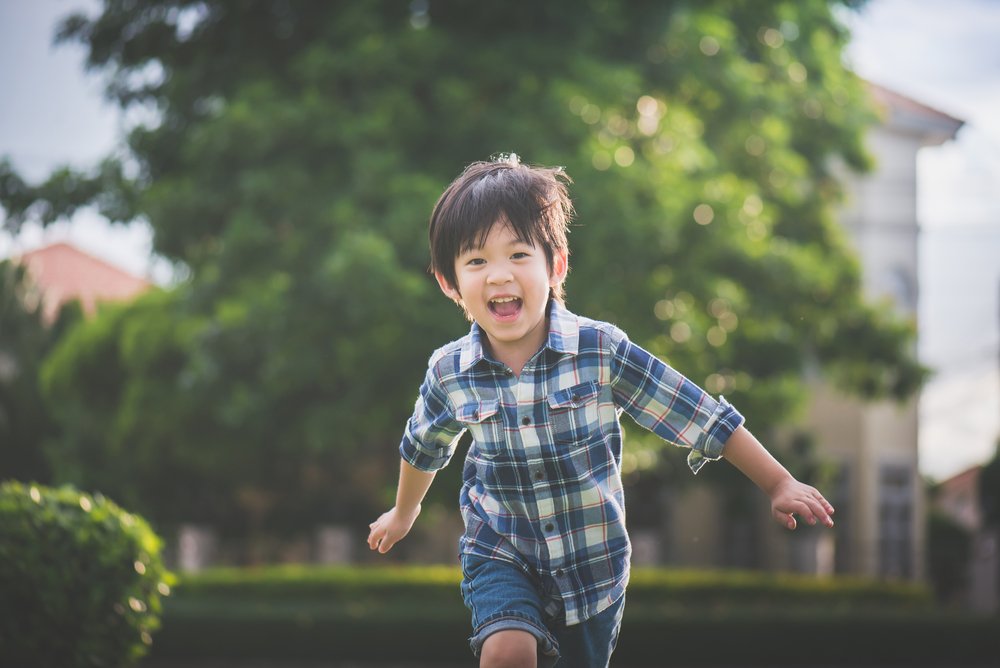Key points:
- Running is a significant gross motor skill development milestone between 18-36 months.
- Encourage activities that improve balance and spatial skills.
- Active play and physical activities for at least 30 minutes daily are crucial.
- Foster skill acquisition through observation, imagination, imitation, practice, and motivation.
In the physical developmental area, there are a few skills that your little one will master soon. If we focus on gross motor skills, there is an exciting milestone that children accomplish between 18 and 36 months: running.
Since your little one’s brain, muscles, and nerves continue to develop, it’s important to support the acquisition of new skills. Sometimes we think that the development happens automatically, by instinct. However, recent studies show that the activities you and your child are involved in have a great impact on their skills.
12-24 months
A sign that your child is about to start running is their growing interest in going up and down the stairs, dancing, and jumping. These are signs that their muscles are getting stronger and are getting ready to run. To do so, they must improve their balance and develop their spatial skills, which will help them become a better runner.
How can you help them during this stage? Create a game where they need to sit on a chair and get up repetitively, for example by playing musical chairs. This activity will stimulate their spatial skills, movement planning, balance, muscular strength, and instruction comprehension.
It is also recommended to give instructions while they are moving to foster their cognitive area, for example by saying “Stop!” or “Wait for me”. Maybe your child won’t follow the instruction at first, but little by little you’ll see how they start to understand their meaning while they work on their language comprehension and concept of cause and effect.
24-36 months
During this stage, you’ll notice that your child’s movements become more coordinated, they keep their balance for longer, jump while holding something, have better reflexes, and maybe run short distances.
It is recommended that your child engages in at least 30 minutes of physical activities and 60 minutes of free play every day. We don’t recommend that they remain inactive for more than 60 minutes. Instead of sitting them in front of a movie, go to the park, follow the lines on the floor, or play hopscotch.
These kinds of activities will strengthen their muscles, perfect their acquired skills, and help your child feel safe enough to experiment with new movements. For example, by running over different surfaces, turning in the middle of a sprint, or practicing better arm control. Also, you’ll have fun together!
36-48 months
During these months, you’ll notice that your child becomes a very active little child. Now, their gross motor skills will be very diverse, they’ll be able to master certain skills like running and jumping, their balance will be much better, and they’ll start acquiring new skills like throwing, catching, and kicking a ball.
How can you stimulate your little one’s skills? Aside from the importance of free play that we’ve already mentioned, your little one will be ready to follow a short process that will help them acquire new skills. We will show it to you by using a simple example of how the steps work.
- Watches the action performed by others: Ask your little one to watch how a player kicks a ball to score a goal.
- Creates an image of the action: Ask your child to imagine and describe how did the player come close to the ball and where did they kick it to.
- Imitates action: Now they’ll need to stand beside the player or a friend and try to kick the ball.
- Practices action: They probably won’t be able to kick the ball the first few times, so make sure they keep trying.
- Is motivated and repeats action: Remember that the motivation they receive will make them feel confident enough to try again. Tell them you know that they can do it, so they feel comfortable enough to keep practicing.
By the time your child turns 3, they’ll need many opportunities to practice these skills. Try to let them solve a problem by themselves and, when you see them struggling after a few attempts, help them out by guiding their actions.
Don’t forget that one of our goals is for you to do the activities together. A safe and secure environment will foster an optimal development. And what better way of creating such a space than playing with your little one while they develop other skills.








